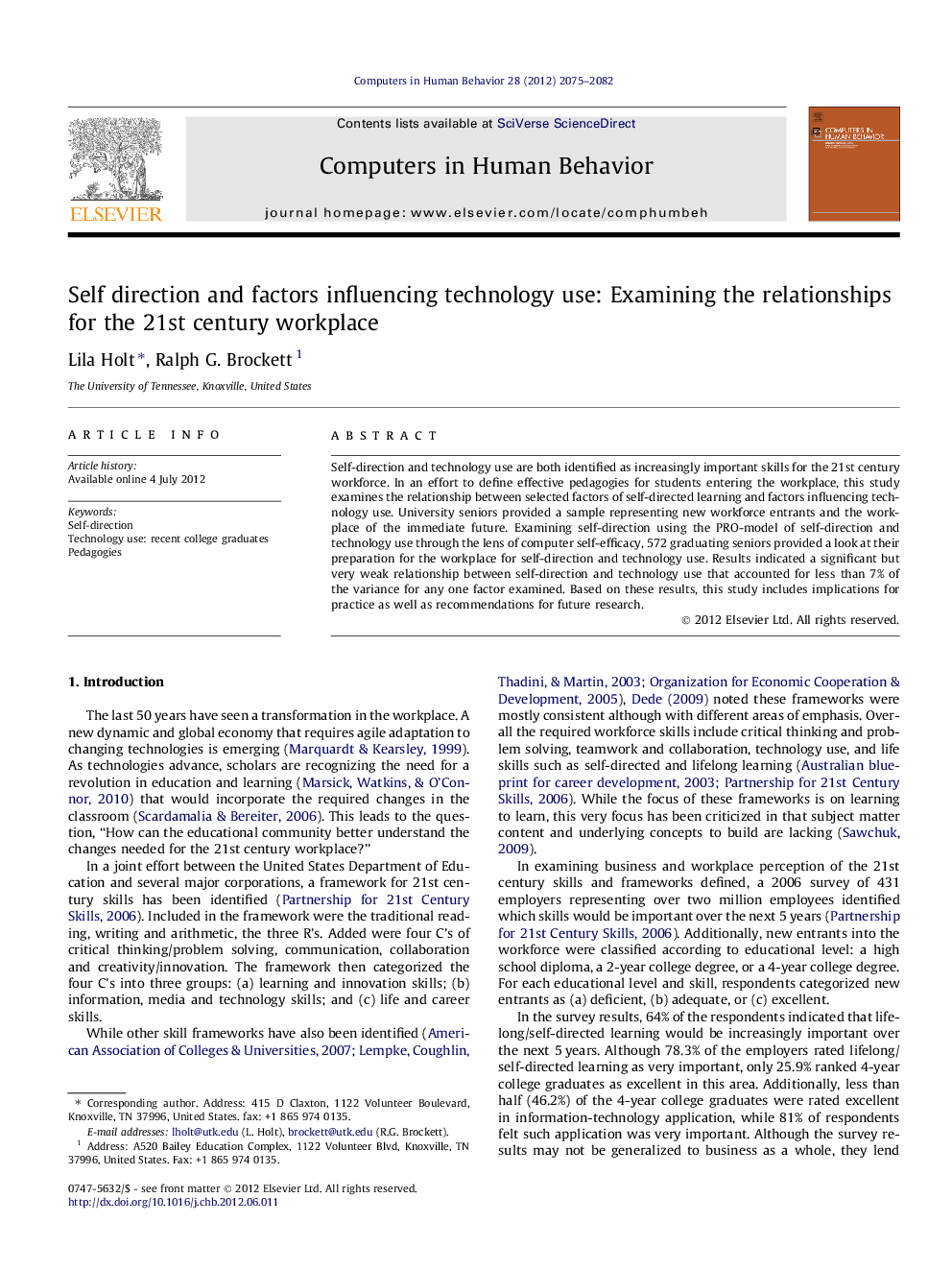| Article ID | Journal | Published Year | Pages | File Type |
|---|---|---|---|---|
| 351293 | Computers in Human Behavior | 2012 | 8 Pages |
Self-direction and technology use are both identified as increasingly important skills for the 21st century workforce. In an effort to define effective pedagogies for students entering the workplace, this study examines the relationship between selected factors of self-directed learning and factors influencing technology use. University seniors provided a sample representing new workforce entrants and the workplace of the immediate future. Examining self-direction using the PRO-model of self-direction and technology use through the lens of computer self-efficacy, 572 graduating seniors provided a look at their preparation for the workplace for self-direction and technology use. Results indicated a significant but very weak relationship between self-direction and technology use that accounted for less than 7% of the variance for any one factor examined. Based on these results, this study includes implications for practice as well as recommendations for future research.
► Self-direction and technology use are examined for college graduates entering the workforce. ► Self-direction is measured using the factors of motivation, initiative, control and self-efficacy. ► Technology use is measured using computer self-efficacy, attitudes and anxiety. ► A significant but weak relationship exists between self-direction and factors of technology use.
